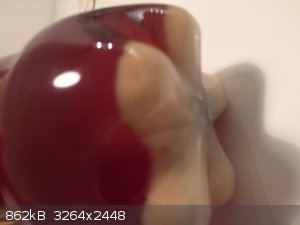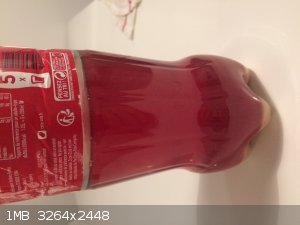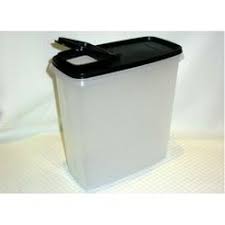Keras
National Hazard
   
Posts: 768
Registered: 20-8-2018
Location: (48, 2)
Member Is Offline
|
|
Haloform reaction goes weird
Folks,
I'm in vacation, but decided I needed chloroform to remove a few stubborn spots on clothes. So here it goes, local convenience store, bought acetone,
sodium hydroxide and those pellets of that are supposed to be substitutes to standard sodium hypochlorite bleach (it's sodium dichloroisocyanurate
dihydrate).
Begin to dissolve three pallets in some water, add sodium hydroxide, then acetone, all that in an empty and washed Coke bottle. Mix all that
thoroughly and…
The solution goes orange/red. :?
After about 12 hours, the solution is still orange/red, as if bromine or iodine in solution. At the bottom of the bottle, I have some whitish
semi-solid goop where I should collect chloroform. I'm going to let that rest overnight, but I'm curious. Could the pellets be contaminated with
bromide? Bromoform is liquid at rt so I shouldn't have that goo. Is it iodoform? I'm a bit at a loss, and since I'm away without glassware and
reactants, I wonder what I could do to solve this puzzle.
Any idea? Thanks! (PS: I know, the colour is appropriate for a recycled Coke bottle!)
 
|
|
|
Abromination
Hazard to Others
  
Posts: 432
Registered: 10-7-2018
Location: Alaska
Member Is Offline
Mood: 1,4 tar
|
|
Quote: Originally posted by Keras  | Folks,
I'm in vacation, but decided I needed chloroform to remove a few stubborn spots on clothes. So here it goes, local convenience store, bought acetone,
sodium hydroxide and those pellets of that are supposed to be substitutes to standard sodium hypochlorite bleach (it's sodium dichloroisocyanurate
dihydrate).
Begin to dissolve three pallets in some water, add sodium hydroxide, then acetone, all that in an empty and washed Coke bottle. Mix all that
thoroughly and…
The solution goes orange/red. :?
After about 12 hours, the solution is still orange/red, as if bromine or iodine in solution. At the bottom of the bottle, I have some whitish
semi-solid goop where I should collect chloroform. I'm going to let that rest overnight, but I'm curious. Could the pellets be contaminated with
bromide? Bromoform is liquid at rt so I shouldn't have that goo. Is it iodoform? I'm a bit at a loss, and since I'm away without glassware and
reactants, I wonder what I could do to solve this puzzle.
Any idea? Thanks! (PS: I know, the colour is appropriate for a recycled Coke bottle!)
|
First of all, I dont think the haloform reaction will take place without the hypochlorite ion. I am not sure what you have managed to make, I’m not
to bothered to research right now.
Second of all, leaving chloroform exposed to light is quite dangerous, it forms phosgene.
Finally, did you just add the acetone to the tablets in random proportions?
List of materials made by ScienceMadness.org users:
https://docs.google.com/spreadsheets/d/1nmJ8uq-h4IkXPxD5svnT...
--------------------------------
Elements Collected: H, Li, B, C, N, O, Mg, Al, Si, P, S, Fe, Ni, Cu, Zn, Ag, I, Au, Pb, Bi, Am
Last Acquired: B
Next: Na
-------------- |
|
|
mayko
International Hazard
    
Posts: 1218
Registered: 17-1-2013
Location: Carrboro, NC
Member Is Offline
Mood: anomalous (Euclid class)
|
|
If I had to guess, I'd say the red color is from the base-catalyzed condensation of acetone.
Stoichiometry is important in this prep; otherwise you might end up with a difficult-to-separate mixture of partially completed haloforms.
This reaction works fine in a (HDPE) bleach bottle, but I don't know that I would trust a PETE soda bottle to withstand strong base, acetone, and
chloroform simultaneously!
https://www.plasticsintl.com/chemical-resistance-chart
al-khemie is not a terrorist organization
"Chemicals, chemicals... I need chemicals!" - George Hayduke
"Wubbalubba dub-dub!" - Rick Sanchez
|
|
|
draculic acid69
International Hazard
    
Posts: 1371
Registered: 2-8-2018
Member Is Offline
|
|
I can vouch for a coke bottles ability to withstand acetone,DCM, NaOH,or hypochlorite and I'm guessing that it can stand up to all these together but
I haven't tried it.i know that mixing up chloroform in clear kitchen Tupperware containers leads to the flat bottom warping up to the top of the
container.this the type of container I'm talking about below.its not compatible with chloroform.after mixing the ingredients and leaving it overnight
the next morning there was a mountain made of the flat bottom stretching upwards like a giant wide NMR peak.it was Kmart Tupperware stuff not sure
what type of plastic that is.PET is definitely resistant to the ingredients.

|
|
|
draculic acid69
International Hazard
    
Posts: 1371
Registered: 2-8-2018
Member Is Offline
|
|
Back to the point I've never heard of using tcca or its sodium salts to make chloroform so im pretty certain you need to stick to hypochlorite.
|
|
|
Keras
National Hazard
   
Posts: 768
Registered: 20-8-2018
Location: (48, 2)
Member Is Offline
|
|
Yeah, you're prolly all right. The TCCA releases chlorine only slowly, so most of the acetone would probably self-condense via an aldol reaction into
mesityl oxide or phorone, or even higher products. I'll ditch that and try again with true hypochloride.
Doesn't the reaction work with simple Cl- ions from, say, NaCl?
|
|
|
Metacelsus
International Hazard
    
Posts: 2531
Registered: 26-12-2012
Location: Boston, MA
Member Is Offline
Mood: Double, double, toil and trouble
|
|
No, mixing NaCl and acetone will do nothing.
|
|
|
woelen
Super Administrator
        
Posts: 7976
Registered: 20-8-2005
Location: Netherlands
Member Is Offline
Mood: interested
|
|
Be careful when mixing TCCA and acetone. TCCA and acetone can react extremely violently, producing a lot of flammable vapor of acetone and if the
reaction is scaled up too much, then the mix may even ignite! TCCA dissolves in acetone to some extent, and addition of other chemicals may suddenly
set off the reaction and lead to an eruption of liquid and vapor from the flask.
TCCA is not really useful for making CHCl3. I also tried this myself, but in aqueous solution. I added NaOH to the TCCA, just enough to dissolve it in
water, and to that I added acetone. In that way, you can make some CHCl3, but the liquid tends to become very dilute and it does not easily separate.
Much better to use bleach, to which, while stirring very well, acetone is dripped slowly, but without adding too much acetone. Formation of CHCl3 can
be observed nicely, due to clouding of the liquid. The CHCl3 settles in the form of big drops at the bottom.
No need to worry for formation of phosgene in this reaction. CHCl3 can indeed form phosgene in contact with air, but this reaction is very slow (on
storage for weeks or months, a small fraction of phosgene may form). When the CHCl3 is in contact with a lot of water, as in this experiment, then no
phosgene is formed at all.
|
|
|
Boronic acid
Harmless

Posts: 1
Registered: 20-7-2019
Member Is Offline
|
|
any phosgene will probably just react with the hydroxide.
|
|
|
Keras
National Hazard
   
Posts: 768
Registered: 20-8-2018
Location: (48, 2)
Member Is Offline
|
|
Quote: Originally posted by woelen  | | Be careful when mixing TCCA and acetone. TCCA and acetone can react extremely violently, producing a lot of flammable vapor of acetone and if the
reaction is scaled up too much, then the mix may even ignite! TCCA dissolves in acetone to some extent, and addition of other chemicals may suddenly
set off the reaction and lead to an eruption of liquid and vapor from the flask. |
Fortunately, that didn't
happen. I added acetone last, began by TCCA and then sodium hydroxide. That way, I was able to monitor the reaction and avoid any overheating/thermal
runaway.
Quote: Originally posted by woelen  | TCCA is not really useful for making CHCl3. I also tried this myself, but in aqueous solution. I added NaOH to the TCCA, just enough to dissolve it in
water, and to that I added acetone.
|
That's precisely what I did. Did my first message suggest otherwise?
Quote: Originally posted by woelen  | | In that way, you can make some CHCl3, but the liquid tends to become very dilute and it does not easily separate. Much better to use bleach, to which,
while stirring very well, acetone is dripped slowly, but without adding too much acetone. Formation of CHCl3 can be observed nicely, due to clouding
of the liquid. The CHCl3 settles in the form of big drops at the bottom. |
Yeah, I did that one with regular
bleach, and as you say, it worked quite well. I suppose TCCA releases chlorine only slowly, so the vast majority of the acetone undergoes an aldol
condensation instead of being attacked by a chloride ion.
Quote: Originally posted by woelen  | | When the CHCl3 is in contact with a lot of water, as in this experiment, then no phosgene is formed at all. |
Can't you simply store the chloroform under a thin water layer, as one does for white phosphorus?
Indeed I tried that
and all I was left with was a nice layer of metisyl oxide, or even phorone.
Thanks to all for your really informative answers. So much appreciated.
[Edited on 31-7-2019 by Keras]
|
|
|
woelen
Super Administrator
        
Posts: 7976
Registered: 20-8-2005
Location: Netherlands
Member Is Offline
Mood: interested
|
|
| Quote: | | [...] so the vast majority of the acetone undergoes an aldol condensation instead of being attacked by a chloride ion. |
Chloride ion does not form CHCl3 with acetone. It is the hypochlorite ion which does.
TCCA does not have free hypochlorite, but it releases hypochlorite when brought in contact with alkaline aqueous solutions. Excess TCCA in turn can
react with hypochlorite ion, giving rise to a plethora of products, the most noticeable being chloramines or even NCl3. If you mix solid TCCA with
solid hypochlorite (e.g. calcium hypochlorite) and add a drop of water, then an extremely violent reaction occurs.
| Quote: | | Indeed I tried that and all I was left with was a nice layer of metisyl oxide, or even phorone. |
Adding a concentrated salt solution to a mix of acetone and water indeed leads to separation of an organic layer from the aqueous layer, but this is
simply acetone. No reaction occurs. Acetone is miscible with pure water, but when a lot of salt is dissolved in the water, then the solubility of
acetone decreases and part of it separates from the water, forming a separate phase. It is like a precipitation reaction, but now with a liquid, which
has lower density than water and this does not settle at the bottom, but forms a layer on top of the aqueous layer. This process is called "salting
out".
|
|
|
Keras
National Hazard
   
Posts: 768
Registered: 20-8-2018
Location: (48, 2)
Member Is Offline
|
|
Quote: Originally posted by woelen  | Chloride ion does not form CHCl3 with acetone. It is the hypochlorite ion which does.
TCCA does not have free hypochlorite, but it releases hypochlorite when brought in contact with alkaline aqueous solutions. Excess TCCA in turn can
react with hypochlorite ion, giving rise to a plethora of products, the most noticeable being chloramines or even NCl3. If you mix solid TCCA with
solid hypochlorite (e.g. calcium hypochlorite) and add a drop of water, then an extremely violent reaction occurs. |
Thanks for the warning!
Quote: Originally posted by woelen  | | Quote: | | Indeed I tried that and all I was left with was a nice layer of metisyl oxide, or even phorone. |
Adding a concentrated salt solution to a mix of acetone and water indeed leads to separation of an organic layer from the aqueous layer, but this is
simply acetone. […] This process is called "salting out". |
Yeah, I know about salting. In that case, I salted a solution of sodium hydroxide and added acetone afterwards. The acetone reacted with the base and
now I'm left with a dense white cloud of something which is probably metisyl oxide. I'll take a picture tomorrow
[Edited on 31-7-2019 by Keras]
|
|
|
|